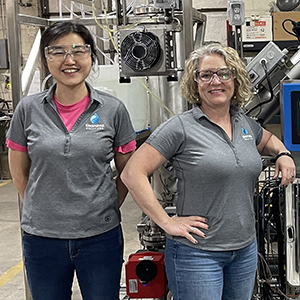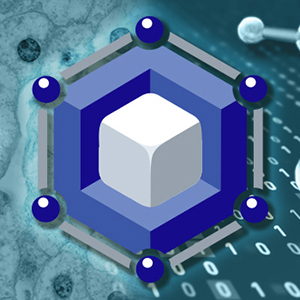NIEHS researchers have found that in rats, exposure to low levels of the chemical GenX may affect the function of certain protective proteins at the blood-brain barrier.
This discovery is important because it suggests that GenX — part of the per- and polyfluoroalkyl substances (PFAS) chemical family — can alter how the body safeguards sensitive organs against exposures. The study was published Mar. 26 in the journal Environmental Health Perspectives.
 In 2017, the Cape Fear River, which is the drinking water source for Wilmington, North Carolina, was found to be contaminated with GenX.
In 2017, the Cape Fear River, which is the drinking water source for Wilmington, North Carolina, was found to be contaminated with GenX.GenX: a next-generation PFAS
The man-made chemicals known as PFAS have been used for different commercial and industrial purposes, such as producing nonstick cookware and firefighting foam. GenX, which was created to replace one of the original PFAS, has been found in groundwater, rain, and even the air in some parts of the United States.
 “The blood-brain barrier is what keeps toxic chemicals out of our brain,” said Birnbaum. “If you inhibit it, it’s not going to protect our vulnerable organs from certain chemicals.” (Photo courtesy of Steve McCaw)
“The blood-brain barrier is what keeps toxic chemicals out of our brain,” said Birnbaum. “If you inhibit it, it’s not going to protect our vulnerable organs from certain chemicals.” (Photo courtesy of Steve McCaw)“PFAS chemicals have been shown to increase cholesterol, lead to kidney and testicular cancer, and increase hypertension during pregnancy,” said Linda Birnbaum, Ph.D., an NIEHS scientist and senior author of the study. “But we don’t really know much about the biological effects of GenX.”
Nightclub bouncers
From previous studies, researchers suspected that GenX could disrupt certain biological pathways in the body. However, they did not know how the chemical affects the activity of specific molecules, especially ones at the blood-brain barrier. That barrier works to prevent harmful agents in the blood from entering the brain by using molecules known as transport proteins.
Ron Cannon, Ph.D., an NIEHS scientist and lead author of the study, likens such proteins to nightclub bouncers. “The transport proteins let in things that are necessary for our brain to function correctly, like nutrients, but keep toxic things out,” he said. “If something becomes toxic once it passes across the blood-brain barrier, then the transport proteins will escort it out.”
The researchers wanted to know how GenX affects transport proteins at the blood-brain barrier. The three proteins they focused on — P-gp, BCRP, and MRP2 — are found in nearly all human tissues, usually in low levels. However, they are highly expressed in barriers that protect sensitive organs, such as the brain, placenta, and retina.
The team exposed rat brain capillaries to concentrations of GenX that are similar to levels measured in humans. They found that even low concentrations of GenX rapidly reduced the transport activity of P-gp and BCRP, but not MRP2.
 “There are many tissues that use protein transporters. The liver, intestines, retina, and placenta are a few,” said Cannon. (Photo courtesy of Steve McCaw)
“There are many tissues that use protein transporters. The liver, intestines, retina, and placenta are a few,” said Cannon. (Photo courtesy of Steve McCaw)The fact that there was no change in MRP2 transport activity suggests that GenX does not affect all transport proteins in the same way.
Lower chances of survival
To understand more about how the chemical affects the human body, the team looked at the function of two human cell types after exposure. They found that the substance alone was not toxic to cells. However, the cells’ chances of survival decreased when the cells were exposed to GenX and challenged with toxic molecules otherwise excluded by normal transport activity.
“Our study shows that GenX can change the biology and signaling pathways of these cells,” said Cannon. “GenX exposure could be having major effects on development.” But he added a caution: “Whether our findings might translate to effects in humans is not known.”
Citation: Cannon RE, Richards AC, Trexler AW, Juberg CT, Sinha B, Knudsen GA, Birnbaum LS. 2020. Effect of GenX on P-glycoprotein, breast cancer resistance protein, and multidrug resistance-associated protein 2 at the blood-brain barrier. Environ Health Perspect 128(3):37002.
(Sheena Scruggs, Ph.D., is a digital outreach coordinator in the NIEHS Office of Communications and Public Liaison.)










